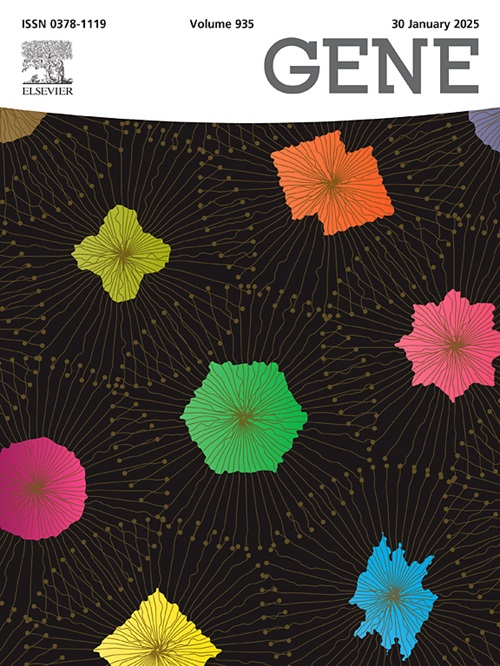鲸类动物特异性GPR12突变与鲸脂增厚在功能上相关
IF 2.4
3区 生物学
Q2 GENETICS & HEREDITY
引用次数: 0
摘要
为了应对水生环境的热挑战,海洋哺乳动物,包括鲸目动物、海龙动物和鳍足动物,独立地进化出了比陆地亲戚厚得多的皮下脂肪层。鲸脂是海洋哺乳动物皮肤下的一种特殊脂肪组织层,对隔热、能量储存、浮力控制和增强运动能力至关重要。然而,脂肪增厚背后的分子进化机制在很大程度上仍未被探索。结果对哺乳动物GPR12基因进行了进化分析,发现了鲸类特有的氨基酸替代,这在其他哺乳动物中是不存在的。体外细胞实验表明,这种氨基酸替代可以降低脂肪甘油三酯脂肪酶(ATGL)的表达,从而降低脂溶活性。结论本研究揭示了影响鲸类动物脂肪分解能力的关键遗传信号,这可能是鲸类动物在次生水生适应过程中脂肪增厚的进化机制。本文章由计算机程序翻译,如有差异,请以英文原文为准。
Cetacean-specific GPR12 mutation is functionally associated with blubber thickening
Background
To cope with thermal challenges of aquatic environments, marine mammals, including cetaceans, sirenians, and pinnipeds, independently evolved a substantially thickened subcutaneous blubber layer compared to terrestrial relatives. The blubber is a specialized adipose tissue layer under the skin of marine mammals and is vital for heat insulation, energy storage, buoyancy control and enhancement of locomotion. However, the molecular evolutionary mechanism underlying blubber thickening remains largely unexplored.
Results
An evolutionary analysis of the mammalian GPR12 gene was conducted to identify a cetacean-specific amino acid substitution that is absent in any other mammals. In vitro cellular experiments suggested that this amino acid substitution could reduce the expression of adipose triglyceride lipase (ATGL) and thereby decrease lipolytic activity.
Conclusions
This study uncovered critical genetic signals which could influence lipolysis capacity in cetaceans and might have been the evolutionary mechanism underlying the blubber thickening in cetaceans during secondary aquatic adaptation.
求助全文
通过发布文献求助,成功后即可免费获取论文全文。
去求助
来源期刊

Gene
生物-遗传学
CiteScore
6.10
自引率
2.90%
发文量
718
审稿时长
42 days
期刊介绍:
Gene publishes papers that focus on the regulation, expression, function and evolution of genes in all biological contexts, including all prokaryotic and eukaryotic organisms, as well as viruses.
 求助内容:
求助内容: 应助结果提醒方式:
应助结果提醒方式:


